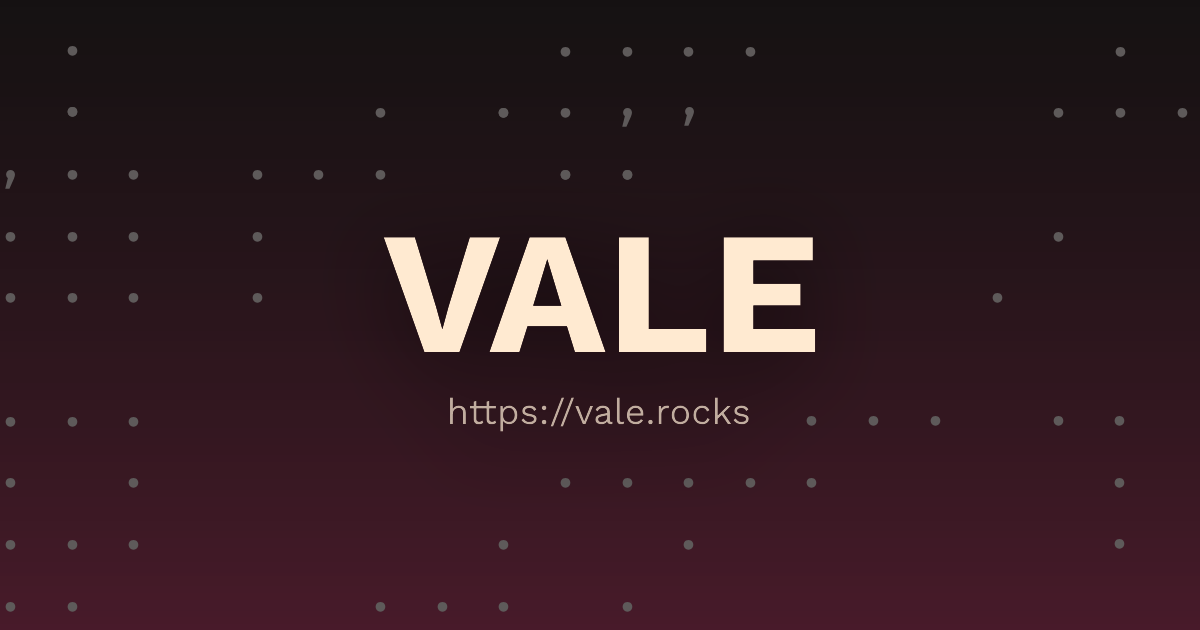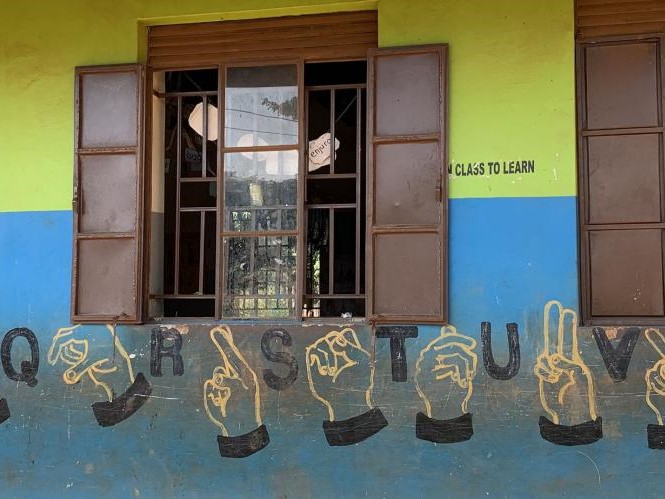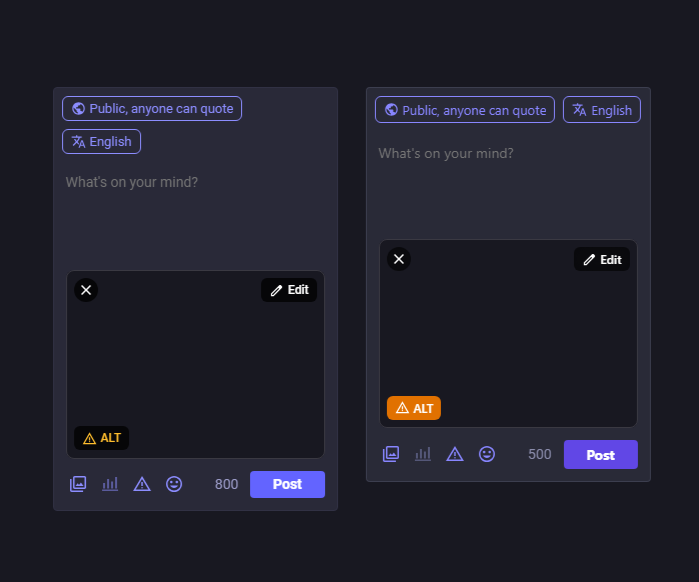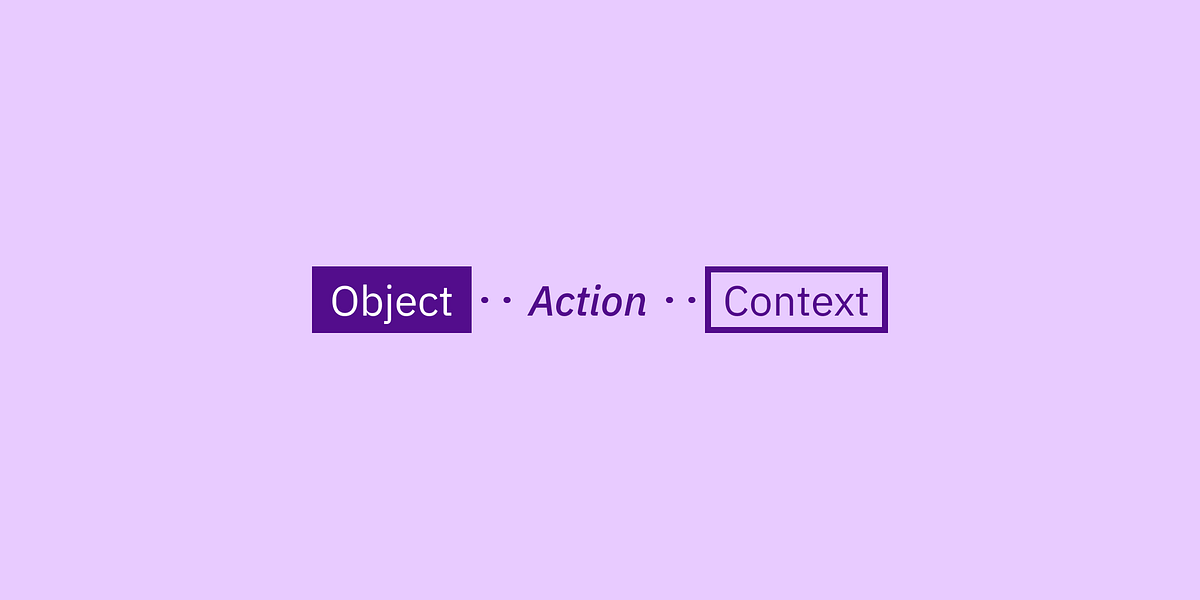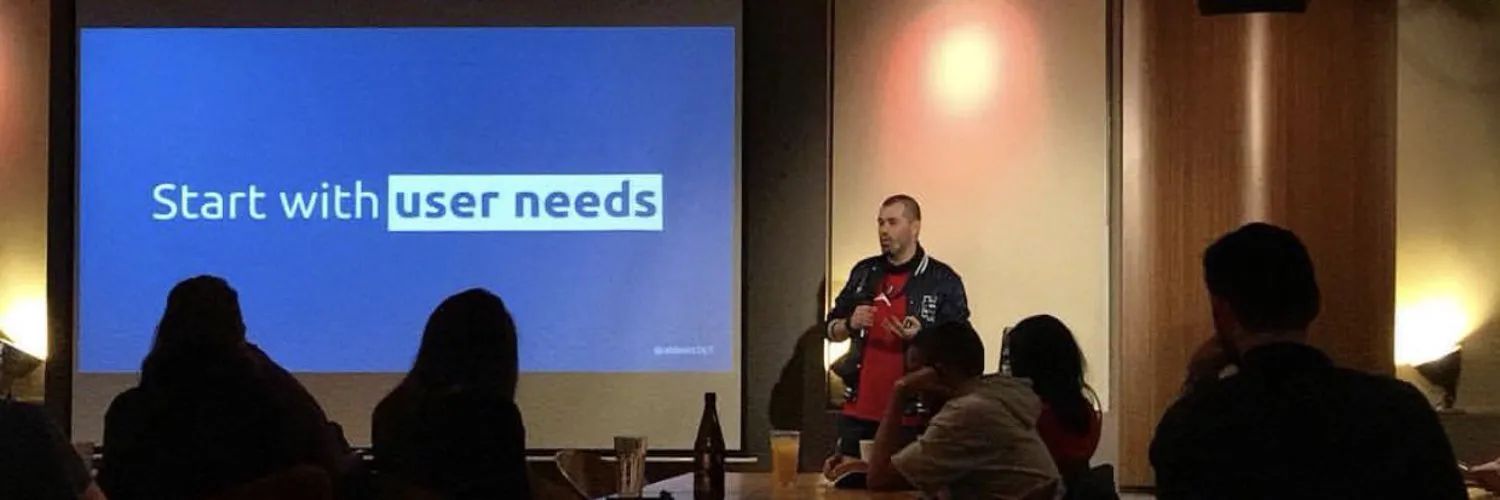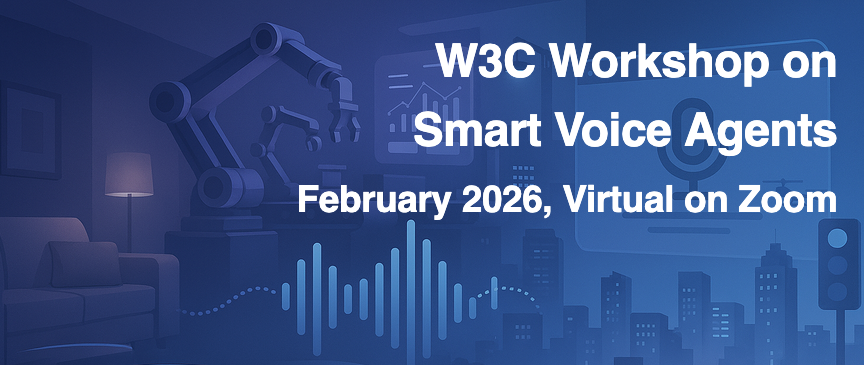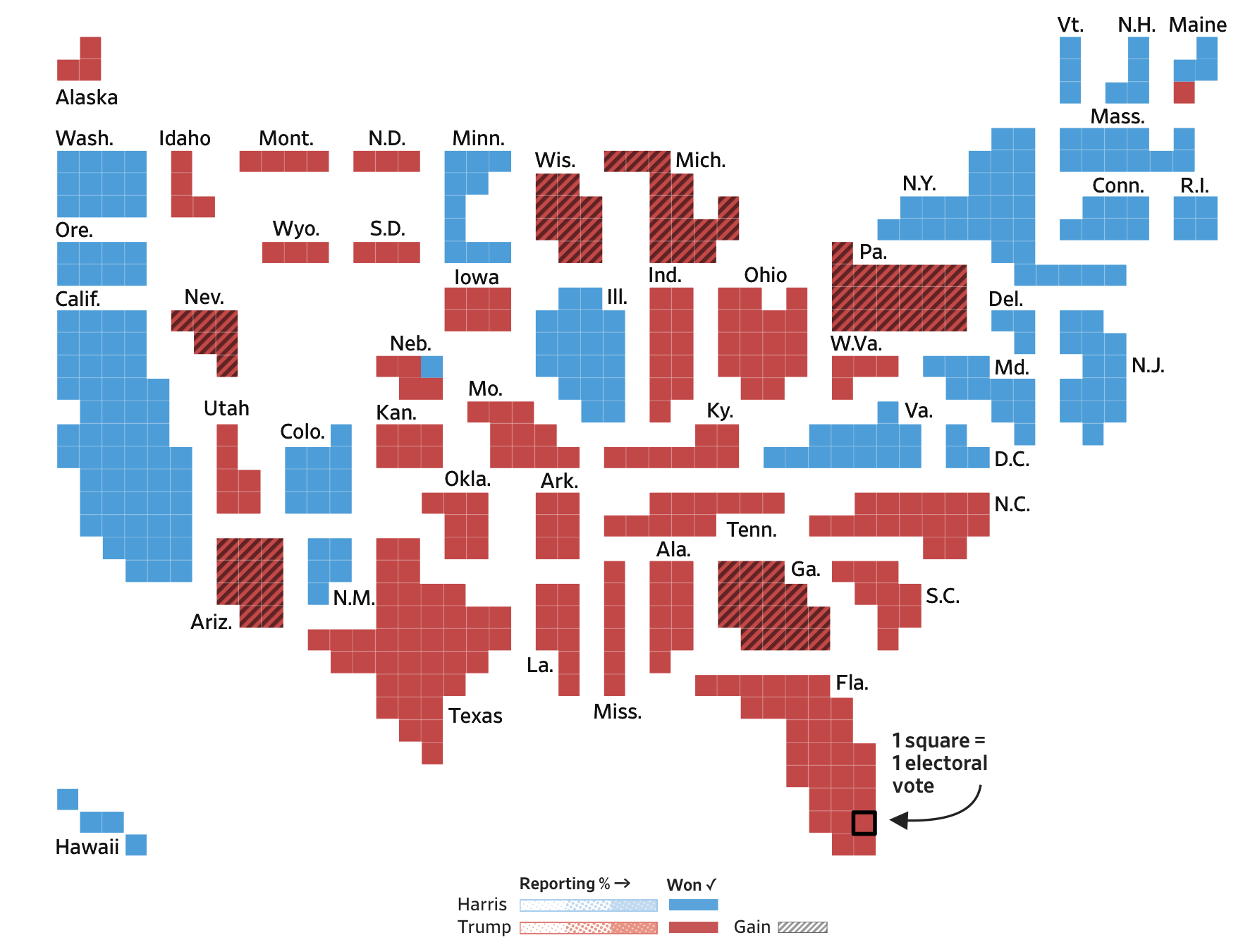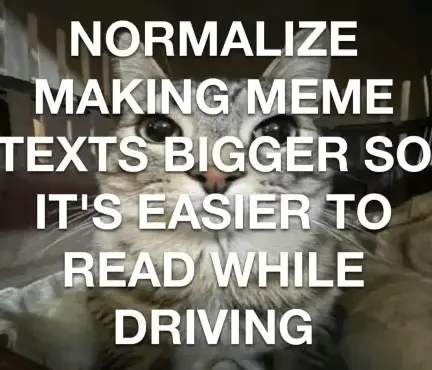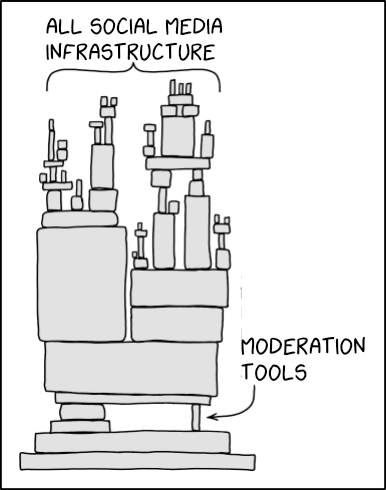A rant in the face of the industry’s continued neglect and outright hostility towards digital accessibility and care for users.
Search results
Top 5 #accessibility improvements in #GNOME Calendar 49:
1. Focus indicators were added in various places
2. Events are focusable with a keyboard
3. Year/month spin buttons are navigable with arrow keys
4. Calendar grids are skippable with Tab, and cells are wrapped via keyboard focus
5. Calendar list box now behaves like a check box
For screen readers: events and year/month spin buttons have proper semantics!
I've just seen an absolutely disgusting article. I said "seen", not "read", because I'm blind and I could not read it.
for your reference, here's the first beautiful sentence of this article:
"ffGE ARrj XRejm XAj bZgui cB R EXZgl, Rmi mjji jrjg-DmygjREDmI XgRDmDmI iRXR XZ DlkgZrj."
I don't know the technology behind this BS, but screen readers see it as scrambled text, kind of encrypted or something like this. I guess it's some font juggling (ChatGPT supposed it's gliph scrambling, where random Unicode values are mapped to random letters — I'll trust her in this because I really don't care about the tech behind it), but if you have a tiny little grain of empathy, never ever ever do this, for goodness sake.
https://tilschuenemann.de/projects/sacrificing-accessibility-for-not-getting-web-scraped
#Accessibility #Blindness #Empathy #BadPractices #Web #Text
A gentle reminder to folks who are new to Mastodon. In solidarity with those in the disabled community who rely on screen readers, we ask that you:
* Add alt text/image descriptions when you post media
* Capitalize the first letter of every word in a hashtag #LikeThis
* Avoid emojis in your display name
UPDATE: So many great questions! Please check the replies to see if your question has been asked and answered ❤️
#StrongerTogether #Accessibility #AltText #Disability #Solidarity #FediTips
A interesting little story from HTMHell about how much little details matter for accessibility.
Hey, I've been under distress lately due to personal circumstances that are outside my control. I can't find a permanent job that allows me to function, I'm not eligible for government benefits, my grant proposals got rejected, paid internships are quite difficult to find. Essentially, I have no stable monthly income that allows me to sustain myself.
Nowadays, I work mostly on accessibility throughout GNOME as a volunteer, improving the experience of people with disabilities. I helped make the majority of GNOME Calendar accessible with a keyboard and screen reader — still an ongoing effort with !564 and !598 —which is an effort no company ever contributed financially. These merge requests take thousands (literally) of hours to research, develop, and test, which would have been enough to sustain myself for a couple of years if I had been working under a salary.
I would really appreciate any kinds of donations, especially ones that happen periodically to bump my monthly income.
These donations will allow me to sustain myself while allowing me to continue working on accessibility throughout GNOME, potentially even 'crowdfunding' development without doing it on the behalf of the Foundation.
I accept donations through the following platforms:
- “TheEvilSkeleton” on Liberapay: https://liberapay.com/TheEvilSkeleton/donate (free and open-source platform)
- “TheEvilSkeleton” on Ko-fi: https://ko-fi.com/theevilskeleton
- “TheEvilSkeleton” on GitHub Sponsors: https://github.com/sponsors/TheEvilSkeleton
Boosts welcome and appreciated.
#Accessibility #a11y #GNOME #GNOMECalendar #MutualAidRequest #MutualAid

GNOME Calendar: A New Era of Accessibility Achieved in 90 Days
There is no calendaring app that I love more than GNOME Calendar. The design is slick, it works extremely well, it is touchpad friendly, and best of all, the community around it is just full of wonderful developers, designers, and contributors worth collaborating with, especially with the recent community growth and engagement over the past few years. Georges Stavracas and Jeff Fortin Tam are some of the best maintainers I have ever worked with. I cannot express how thankful I am of Jeff’s underappreciated superhuman capabilities to voluntarily coordinate huge initiatives and issue trackers. One of Jeff’s many initiatives is gnome-calendar#1036: the accessibility initiative, which is a big and detailed list of issues related to accessibility. In my opinion, GNOME Calendar’s biggest problem was the lack of accessibility support, which made the app completely unusable for people exclusively using a keyboard, or people relying on assistive technologies. This article will explain in details about the fundamental issues that held back accessibility in GNOME Calendar since the very beginning of its existence (12 years at a minimum), the progress we have made with accessibility as well as our thought process in achieving it, and the now and future of accessibility in GNOME Calendar.
tesk.page · TheEvilSkeleton
Link author: ![]() TheEvilSkeleton@TheEvilSkeleton@treehouse.systems
TheEvilSkeleton@TheEvilSkeleton@treehouse.systems
About fucking time.
“Judge orders White House to use American Sign Language interpreters at briefings”
https://www.npr.org/2025/11/05/nx-s1-5599118/white-house-asl-deaf-american-sign-language-judge-order
Sadly, does not include VP briefings. White House is supposed to update court on progress by end of week. Curious how it will jerk court around.
Not just unsurprising, but utterly predictable.
“Trump administration says sign language services ‘intrude’ on Trump’s ability to control his image”
https://apnews.com/article/american-sign-language-trump-white-house-7ac33c635cdefd22154d6eb7e47d3d55
Though he has a point — having an ASL interpreter could make it look like he cares about, well anything other than himself. That’s not his brand.
About fucking time.
“Judge orders White House to use American Sign Language interpreters at briefings”
https://www.npr.org/2025/11/05/nx-s1-5599118/white-house-asl-deaf-american-sign-language-judge-order
Sadly, does not include VP briefings. White House is supposed to update court on progress by end of week. Curious how it will jerk court around.
Okay this is wild. So there was this third-party screen reader for the Mac called Vosh. It's recently been picked up by some one who has had enough of Apple's neglect of the Mac and canned responses. And I understand that. But also I kinda want to ask why not Linux, but I understand that as well, that everything else they like about the Mac except the screen reader.
Today's Web Design Update: https://groups.google.com/a/d.umn.edu/g/webdev/c/A-d9lIVaj2c
Featuring ![]() @michaelharshbarger,
@michaelharshbarger, ![]() @aardrianAdrian Roselli,
@aardrianAdrian Roselli, ![]() @SteveFaulkner,
@SteveFaulkner, ![]() @deconspray,
@deconspray, ![]() @mgiffordMike Gifford, CPWA ,
@mgiffordMike Gifford, CPWA , ![]() @sarajwSara Joy
@sarajwSara Joy  ,
, ![]() @matuzoManuel Matuzović,
@matuzoManuel Matuzović, ![]() @j9tJens Oliver Meiert,
@j9tJens Oliver Meiert, ![]() @mehm8128,
@mehm8128, ![]() @Jayhoffmann,
@Jayhoffmann, ![]() @MeyerwebEric A. Meyer,
@MeyerwebEric A. Meyer, ![]() @bkardell,
@bkardell, ![]() @adactioJeremy Keith,
@adactioJeremy Keith, ![]() @slightlyoffAlex Russell, and more.
@slightlyoffAlex Russell, and more.
Subscribe info: https://www.d.umn.edu/itss/training/online/webdesign/webdev_listserv.html#subscribe
Thanks, Deutsche Bahn 😑
Did make the connection, tho, even though the train from Düsseldorf to Venlo was supposed to be a direct connection. I also bought snacks. It’s finally quiet around me and there are no dogs 🥳
Taking a YouTube break, and found my timeline blessed with a public transportation related fact: https://youtube.com/shorts/Pu8SrJ9SfiM
I'm SO happy with how my talk was produced for #PyLsdiesCon 2025! The intro by Ariane Djeaupang was fantastic and the slick animated title was awesome!
Have a watch here and learn how Python devs (yes, even backend devs) can help out with #accessibility on the web.
https://youtu.be/KrtUTEZzD6U?si=lmTtsCiK600UAAPy
#Wagtail #Django #Python
This year brought great improvements to #accessibility in GNOME, including:
• Accessibility from the start on the login screen
• Full accessibility of GNOME Web
• Tons of improvements to Calendar
• Screen reader integration for Notifications
• Configure #Orca screen reader from Settings
• GTK apps integrated w/Windows & macOS accessibility
Help us reach 1,500 #FriendsOfGNOME so we can focus on accessibility even more in 2026!
And 🚀 Space Reviewers 👾 Accessibility Edition is live!
Join to see how the #Django #Accessibility Team reviews PRs 🤩
I've had a lot of financial setbacks this year. Ripped off several times on my way out of the US. Medical emergency and follow-up appointments that had to be paid for out of pocket. Higher costs than anticipated due to Masters dragging on and tying me down past the best time to leave.
I try hard to keep costs low. I walk in a lot of pain sometimes so I can avoid paying for transportation.
I'd really appreciate whatever help you could spare trying to get an accessible ride again.
The point to donating to this trike crowdfund on #BandcampFriday is that Bandcamp waives its fees for me on that day. Only PayPal will charge me a fee. So that increases the amount of money from a music purchase that goes to me and this recumbent crowdfund.
So this Friday, December 5th, if you're able to donate to help a disabled geezette like me out, I would so appreciate it. https://meganlynch.bandcamp.com/album/songs-the-brothers-warner-taught-me #BikeNite #BikeTooter #MutualAid #Accessibility
Happy International Day of Persons with Disabilities!
This year's theme: "Fostering disability inclusive societies for advancing social progress."
Because we can't move our society forward without everyone being included.
https://www.un.org/en/observances/day-of-persons-with-disabilities
#disability #accessibility #InternationalDayOfPersonsWithDisabilities
One way we can all celebrate is by learning about the importance of accessibility on social media.
Happy International Day of Persons with Disabilities!
This year's theme: "Fostering disability inclusive societies for advancing social progress."
Because we can't move our society forward without everyone being included.
https://www.un.org/en/observances/day-of-persons-with-disabilities
#disability #accessibility #InternationalDayOfPersonsWithDisabilities
Today is International Day of Persons with Disabilities. Accessibility removes barriers that many people never notice but others bump into every day. For those of you doing this work, it isn't always easy. Some days you fix one thing only to discover three more waiting behind it. But the progress you make does matter. Keep going. #accessibility #IDPD
424-word hot take: “You Can’t Make Something Accessible to Everyone”
https://adrianroselli.com/2025/12/you-cant-make-something-accessible-to-everyone.html
Over November 2025, I've been able to contribute to ![]() @gnome, and it was a pleasure!
@gnome, and it was a pleasure!
I focused on GNOME Clocks, with the goal of making it as good as possible for GNOME 50. I focused on #accessibility, #linuxmobile and all sorts of bug fixes and features, as well as issue and MR triaging.
I also fixed some tiny issues in #GTK and #libadwaita, and helped make gettext-pseudolocale as good as possible.
I hope to find more free time to make GNOME Clocks 50 dependable as a mobile clocks app.
Presenting the Alt Text Health Check image accessibility report #3.
https://stefanbohacek.com/blog/alt-text-health-check-image-accessibility-report-3/
#AltText #AltTextHealthCheck #accessibility #ImageDescription #fediverse
Mastodon's "missing alt text" warning badge is getting an update 👀
Big update to the annotated edition of G.H. Hardy's ‘A Mathematician's Apology’: the PDF is now *tagged* (plus various minor improvements).
(A #TaggedPDF contains extra semantic information to assist screen-reading software etc.)
The new version is available (#OpenAccess as always) at https://archive.org/details/hardy_annotated
The LaTeX tagging system is still under development [https://latex3.github.io/tagging-project/], but I have been making progress in adapting my LaTeX styles to be tagging-compatible.
For the annotated ‘Apology’, I also had to re-implement a subset of the functionality of the "manyfoot" package (which is currently not tagging-compatible), because there are two different kinds of footnotes in the annotated ‘Apology’. (Hardy's original footnotes and the annotations.)
Although the PDF passes VeraPDF validation, there may of course be mistakes in the tagging. Feedback, especially from users of screen readers, would be much appreciated, especially because I now hope to add tags to ‘Form & Number: A History of Mathematical Beauty’ [https://archive.org/details/cain_formandnumber_ebook_large].
#GHHardy #HistPhil #Mathematics #MathematicalBeauty #TeXLaTeX #Accessibility
So I lost my job yesterday, which means I'm looking to #GetFediHired! I've been a Senior Software Dev for ~8 years, but I've been programming for more than 20 years.
I have lots of experience with C, C++, C#, Python, JS, x86 and other assembly. I've touched a lot of languages on several platforms. I have worked a bunch in simulation and robotics (ROS), open-source software, and 2D and 3D graphics.
Hoping to work with interesting people on interesting projects. Diversity and accessibility are very important to me. Remote work is preferred. I am in Canada.
Edit: Getting ahead of this now. No GenAI cultism please. No late-stage corpo ad-serving, data scraping, always online, crypto stuff either.
Thank you in advance, I love you! 


A great guide on how to write good descriptions of images and videos in posts in a way that will help people with sight problems "see them" and appreciate them.
https://uxdesign.cc/how-to-write-an-image-description-2f30d3bf5546?gi=452f3faa9651
Finally hit publish on a blog post I've been writing for a while.
It's common to hear the term "fully accessible" used to describe products which have passed WCAG 2.2 level AA. But, are they really?
In this post, I explore 5 examples which highlight why WCAG, as awesome as it is, is not a measure of great usability or performance.
FreeBSD Accessibility Handbook
<https://docs.freebsd.org/en/books/accessibility/> (parts) | <https://docs.freebsd.org/en/books/accessibility/book/> (the book)
Published today.
Thanks to ![]() @alfonsosiciliano, to
@alfonsosiciliano, to ![]() @pauamma for review, and to
@pauamma for review, and to ![]() @FreeBSDFoundation for sponsorship.
@FreeBSDFoundation for sponsorship.
Hello world 👋, here's the Mozilla Localization team. 🦊
Our goal is to make Mozilla's products available in as many languages as possible, ensuring that people can browse the web and use our platform in their native languages.
You can follow us for updates on localization progress, behind-the-scenes insights, and opportunities to get involved. We'll also share Mozilla l10n news, localizer spotlights, and more.
#Mozilla
#Localization
#l10n
#OpenSource
#Accessibility
⏰ The deadline to submit a proposal for the ![]() @w3cWorld Wide Web Consortium workshop on Smart Voice Agents (Feb 2026, virtual) is 27 Nov 2025!
@w3cWorld Wide Web Consortium workshop on Smart Voice Agents (Feb 2026, virtual) is 27 Nov 2025!
Smart voice agents need clearer use cases, stronger #interoperability, better #LLM -based interaction, and improved accuracy, #accessibility, and multilingual support. Broader concerns include device coordination, #privacy, #security, regulatory gaps and emerging business models.
Don’t miss your chance to present your work and submit now: https://www.w3.org/2025/10/smartagents-workshop/
NV Access is pleased to announce that version 2025.3.2 of NVDA, the free screen reader for Microsoft Windows, is now available for download. We encourage all users to upgrade to this version.
This is a patch release to fix a security issue.
Full info and download at: https://www.nvaccess.org/post/nvda-2025-3-2/
#NVDA #NVDAsr #ScreenReader #Accessibility #NewVersion #Release #Update #Download #FOSS #Free
In case you missed it, I updated the Loops roadmap!
It's quite feature packed 😉
Looks fab!
Concerned #accessibility comes after all being worked on now.
I ❤️ #monetization options are planned. Concerned "ad free" options imply ads are planned as part of the roadmap?
Absence of #AI is refreshing!
Is #UnifiedPush part of "push notifications", or just feeding everything via #Google / #Apple? (cue usual: "They're encrypted. Don't ask whether metasdata / future decryption / #MobileLinux matter" discussion)
Project Moebius (#decentalized?), better editing & live streaming look super cool! ❤️
Finally, a regular reminder to please avoid creating a digital 1% elite by focusing "For you" on relevance not rolling-snowball-boosting of already popular accounts/content.
Thanks for all your amazing hard work! 💕 You ROCK!
"New TRISLED Back O’ Bourke full suspension recumbent trike.
Standard Back O’ Bourke trike starting from $9,950. This includes 1×10 gearing, 32T chainring, comfort heel sling pedals, integrated rear rack, Big Apple or Smart Sam tyres, & Shimano disc brakes.
Make your enquiry today for further upgrade options and pricing at info@trisled.com.au."
I keep forgetting about Trisled.
https://trisled.com.au/hpv/back-o-bourke/ #Australia #Recumbent #BikeTooter
Very interesting solution to the problem many disabled people would have of maintaining balance while getting a leg over the frame (or even getting a leg over period).
Have the frame on the side and bring it back around the person. #Australia #Recumbent #Accessibility #BikeTooter https://trisled.com.au/hpv/side-step/
At last, all the accessibility improvements on GNOME Calendar are finally available as a stable release. Get it on Flathub while it's hot!!!
https://flathub.org/en/apps/org.gnome.Calendar
#Accessibility #GNOME #GTK #GTK4 #libadwaita #a11y #calendar #GNOMECalendar #Linux #GNU #OpenSource #FOSS #FreeSoftware #OSS

GNOME Calendar: A New Era of Accessibility Achieved in 90 Days
There is no calendaring app that I love more than GNOME Calendar. The design is slick, it works extremely well, it is touchpad friendly, and best of all, the community around it is just full of wonderful developers, designers, and contributors worth collaborating with, especially with the recent community growth and engagement over the past few years. Georges Stavracas and Jeff Fortin Tam are some of the best maintainers I have ever worked with. I cannot express how thankful I am of Jeff’s underappreciated superhuman capabilities to voluntarily coordinate huge initiatives and issue trackers. One of Jeff’s many initiatives is gnome-calendar#1036: the accessibility initiative, which is a big and detailed list of issues related to accessibility. In my opinion, GNOME Calendar’s biggest problem was the lack of accessibility support, which made the app completely unusable for people exclusively using a keyboard, or people relying on assistive technologies. This article will explain in details about the fundamental issues that held back accessibility in GNOME Calendar since the very beginning of its existence (12 years at a minimum), the progress we have made with accessibility as well as our thought process in achieving it, and the now and future of accessibility in GNOME Calendar.
tesk.page · TheEvilSkeleton
Link author: ![]() TheEvilSkeleton@TheEvilSkeleton@treehouse.systems
TheEvilSkeleton@TheEvilSkeleton@treehouse.systems
After two long and painful years, several design iterations, and more than 50 rebases later, we finally merged the infamous, trauma-inducing merge request !362 on GNOME Calendar.
The calendars list in the quick-add popover has undergone accessibility improvements, providing a better experience for assistive technologies and keyboard users (to a limited extent). Specifically: tabbing from outside the list will focus the selected calendar in the list; tabbing from inside the list will skip the entire list; arrow keys automatically select the focused calendar; and finally, assistive technologies now inform the user of the checked/selected state.
Admittedly, the quick-add popover is currently unreachable via keyboard because we lack the resources to implement keyboard focus for month and week cells. We are currently trying to address this issue in merge request !564, and hope to get it merged for GNOME 50, but it's a significant undertaking for a single unpaid developer. If it is not too much trouble, I would really appreciate some donations, to keep me motivated to improve accessibility throughout GNOME and sustain myself: https://tesk.page/#donate
For non-accessibility-related details about this merge request, feel free to check out https://mastodon.social/@nekohayo/115571375702642784
#GNOMECalendar #GNOME #GTK4 #libadwaita #accessibility #a11y #calendar #FOSS #OpenSource
New blog post out (finally) ✨ I tested the dataviz accessibility of the 2024 presidential election dashboards, and (as expected) found a lot of issues to write about:
https://fossheim.io/writing/posts/2024-dataviz-a11y-elections/
I've been too busy with work to actually write on social media, but the year is soon over which means I soon have availability for new clients again, starting January 2026 👋🏻
I work freelance with web & dataviz accessibility and offer:
- Reviews (high-level or full audit)
- Consulting, advice, documentation
- Training, talks, workshops
- Help with remediation
- Front-end development
Interested?
💌 collab@fossheim.io
some people work hard to try and solve real barriers to #accessibility
others like to waste everybody's energy with pointlessly long-winded theoretical purity discussions on "if text isn't marked up in a <p> element, does it fail 1.3.1?"
i guess if you're being paid by numbers of issues filed, sure... #a11y
This date picker run-down is excellent - thank you ![]() @dbDavid Bushell ☕
@dbDavid Bushell ☕
👋 Re-#introduction, because the last one had gotten a little outdated. And long.

 #Queer #polyamourous #geek. #Blogger since 1998, #IndieWeb fan since forever, #Fediverse citizen since 2018.
#Queer #polyamourous #geek. #Blogger since 1998, #IndieWeb fan since forever, #Fediverse citizen since 2018.
🇪🇺  European in exile living in West #Oxfordshire, #UnitedKingdom, with my partner @fleeblewidgetRuth TA (she/her), her husband
European in exile living in West #Oxfordshire, #UnitedKingdom, with my partner @fleeblewidgetRuth TA (she/her), her husband ![]() @misterjtaJTA [he / his] 🇪🇺, two kids, and one #dog. Politically #environmentalist #socialist.
@misterjtaJTA [he / his] 🇪🇺, two kids, and one #dog. Politically #environmentalist #socialist.

 Software engineer with a focus on #security, #privacy, and #accessibility. Founded and #volunteer with #NonProfit #ThreeRings.
Software engineer with a focus on #security, #privacy, and #accessibility. Founded and #volunteer with #NonProfit #ThreeRings.

 When I've time for fun, I'm into #geohashing, #geocaching, #cycling, and performing #magic. Sometimes at the same time.
When I've time for fun, I'm into #geohashing, #geocaching, #cycling, and performing #magic. Sometimes at the same time.
 He/him pronouns.
He/him pronouns.
📹 Video content: me giving a 15-second summary of the above.
"Is my app accessible? Where do I start making it better?"
These are the first two questions I've been getting from my clients, and they want the answers right away. That's why I'm now offering a new service called the "accessibility checkup" to give you those answer is two business days or less. Same great report you've seen earlier https://drive.google.com/file/d/19rSHKlSe7ww9aqvxNWXpgRAHs2goxgjE/view
delivered to you fast.
Sound like something you or your team would be interested in? Let me know!
We’ve gained a number of new followers recently—shoutouts ![]() @FediFollowsFediFollows has moved!—so maybe it’s time for a re-#introduction?
@FediFollowsFediFollows has moved!—so maybe it’s time for a re-#introduction?
Hi! We’re elementary, an #OpenSource software company with a focus on #InclusiveDesign! We make #elementaryOS—the thoughtful, capable, and ethical replacement for Windows and macOS—plus #AppCenter, the pay-what-you-can app store.
We’ve been contributing to the desktop #Linux space for about 16 years now and we’re 100% funded by regular people just like you 💕
We have a pretty strong stance on #Privacy and don’t believe in advertising as a revenue model. You are not the product! https://blog.elementary.io/you-are-not-the-product/
We believe that #accessibility features should be first class https://blog.elementary.io/accessibility-features-are-just-features/
And we’re all in on #Decentralized technologies like ![]() @FlatpakAppsFlatpak https://blog.elementary.io/elementary-appcenter-flatpak/
@FlatpakAppsFlatpak https://blog.elementary.io/elementary-appcenter-flatpak/
Hello there! Here's my #Introduction.
I'm Jamie, a critical illness survivor powered by classic rock and metal and regular infusions of coffee.
I'm from Birmingham, England and am currently based in the UK.
During the day I work in Cisco Unified Communications and Telecoms. Been in IT and Telecoms for a fair while. NetWare 3.11, SINIX / Reliant UNIX kind of a fair while. Been around, seen a lot.
By night I'm a husband (recently clocked up 10 years of marriage to my wife) and a Tortie Cat daddy. Meow.
We mask the hell up. COVID is not over.
We work remotely very successfully and advocate it.
We are disability, accessibility, LGBTQ* and workplace mental health advocates with lived experience.
Wouldn't say that I'm exciting, dynamic or charismatic but there's a whole bunch of stuff I'm kind of nerdy about so Fedi is the place to be, right? 😀
#Introduction #Accessibility #MentalHealth #LGBTQ
#TransRightsAreHumanRights
For all the push for functionality in social media, the focus on moderation is just... barely considered?
Why do we never learn the lessons of the last failed project?
One could also replace Moderation with Accessibility and it would also be accurate, although people seem to think things would continue to function regardless.
Borrowed from the excellent original "Dependency" by #XKCD:
https://xkcd.com/2347/
Finally got a chance to read ![]() @sundressAlice Boxhall's thoughtful post outlining the "Why" behind the state of accessibility on the web and it is spot on! If you haven't already, please give it a read: https://alice.boxhall.au/articles/a-threat-model-for-accessibility-on-the-web/.
@sundressAlice Boxhall's thoughtful post outlining the "Why" behind the state of accessibility on the web and it is spot on! If you haven't already, please give it a read: https://alice.boxhall.au/articles/a-threat-model-for-accessibility-on-the-web/.
Web Developers & Designers
This is your friendly reminder that low vision users exist. We need font sizes that are dramatically larger than yours.
Many of us use the “minimum font size" NOT zoom, because we need bigger text, not bigger images.
I'm on the very low end of low vision needs, but my 20pt minimum font size breaks SO MANY web sites.
This pic shows how big fonts are on my screen (thumb & ruler for context).
#accessibility #webdesign
It is impossible to overstate the contribution Glen Gordon has made to the #accessibility industry. More important even than that, his meticulous attention to detail and his understanding that something must be more than accessible, it must be efficient, has helped countless people to be productive at work, at school, and just when living life.
Glen devised many concepts that are now just thought of as the way things are done in a graphical user interface.
On top of all that, he is one of the nicest, most humble people I’ve ever met and worked with. I have heard from several young people following the National Federation of the Blind’s National Convention, at which we honored Glen with the prestigious Kenneth Jernigan award and he offered some wise advice, that Glen inspired them.
You are a legend, Glen. And although the words seem ridiculously inadequate, all I can say in conclusion is, thank you so much for all you have done.
I am pasting Glen’s LinkedIn post for those who are not over there.
Glen Gordon, Screen reading for the blind software pioneer, 24 minutes ago • Visible to anyone on or off LinkedIn, 1st
Today is a very sad day for me, since after nearly 32 years, it’s the first day that I’m no longer working on the JAWS screen reader.
I’ve voluntarily resigned my position at Freedom Scientific/Vispero because I found myself unable to continue working for a company that’s changing in ways that are moving away from my personal values.
As recently as the 2025 NFB convention, I was thinking that I’d be working on JAWS far into the future. Much to my surprise, a recent influx of new Executive leaders and customer facing product related changes convinced me that it was time to leave.
I leave behind a group of smart and passionate colleagues, and products which are the best in class. It’s been a great journey, and I thank all of you who have been users of Freedom Scientific software for some or all that time.
Yes, I’m retiring, in the sense that I’m of retirement age and not actively seeking another job. But I’m resigning in the sense that I felt I needed to take a principled stand.
I will continue doing my part to improve the state of accessibility. What that will look like will evolve over time.
#introduction Italian, European, citizen of the world. Internet user since 1998 but started with PC in 1989. Formerly facebook, now stable on Mastodon - formerly "talksina" on MastodonUno italian instance; still "talksina" as handle into Linkedin, WordPress .org profile, google (till it lasts) and github, as it's impossible to edit profile name. I believe in data liberation and ownership. I work on accessibility (web and apps), I have a disability myself (totally blind). Blogger, WordPress user and MarkDown lover, interested in electronic voices and creating audio-dramas with text-to-speech. AI user, moderately optimistic. HIV awareness advocate. Firmly against tech-based "age verification" on sexuality related sites. Education should do the job, allowing governments to control Internet is introduction to censorship. #accessibility #WordPress #blind #disability #hiv #advocacy
Mezzo Fediverso italiano mi conosce ma siccome mi sto un po' alla volta liberando del vecchio nick "talksina" in cui non mi riconosco più, sto gradualmente migrando da @talksinaElena Brescacin a qui. Principalmente per liberarmi dalla schiavitù dei 500 caratteri. Immagine del profilo per ora no, aspetto di farne una coi nuovi occhiali addosso. Continuerò a occuparmi di #WordPress, #accessibility e anche attivismo #hiv se serve. #introduzione #fediverso
I geeked out a bit too much on these accessibility audits 🫣 Want to see what one looks like? https://drive.google.com/file/d/19rSHKlSe7ww9aqvxNWXpgRAHs2goxgjE/view Let me know if you want me to look at your app, too! #iOS #Android #Accessibility #A11y
This is why nobody should ever try and vibe code a screen reader. Do not listen to the blind people that think this is a good idea. They are wrong. https://sightlessscribbles.com/posts/20250902/ #AI #AIHype #Accessibility #A11y
